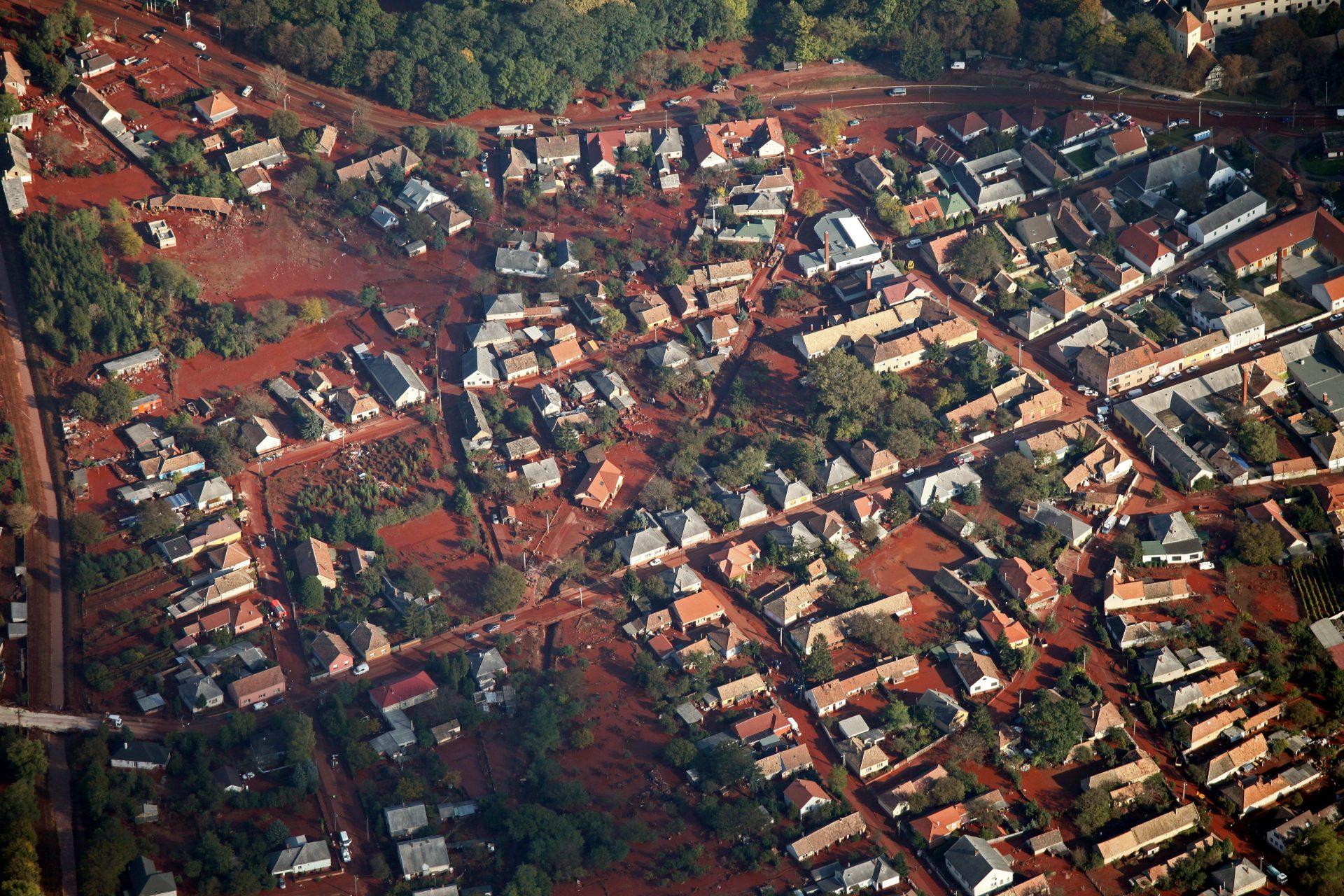
Greenpeace
21 December 2023 Leïla Miñano
Leïla Miñano Eurydice Bersi (Reporters United)
Eurydice Bersi (Reporters United) Ingeborg Eliassen
Ingeborg Eliassen
EU states ‘hide’ true scale of hazardous mining waste buried beneath Europe

Greenpeace
EU states ‘hide’ true scale of hazardous mining waste buried beneath Europe
21 December 2023Investigate Europe analysis finds that at least 20 million tonnes of toxic mining waste were reported to be stored in the EU in 2020 and almost two million citizens are living on land polluted by metal mining. Now, as Europe plans new mining projects, research shows how for years states and the EU ignored the health and environmental risks hidden above and below the surface.
Roger Konaté is proud of his home-made pumping system. With a wave of his hand, he points to a pipe which plunges into the floor of his workshop to reach a nearby spring that provides unlimited water for drinking, washing and tending to his dog and cats. The 56-year-old swapped Marseille for the countryside a decade ago after his security business went bankrupt: "The house, the stream, the land for €10,000!” he beams.
The green land surrounding his property in Échassières in central France did not always look so pristine. It used to be home to the Le Mazet tungsten mine. When it closed 60 years ago after decades of underground excavation, the site went into the care of authorities. Neither the mining firm nor the government were required to restore the area that had become polluted in heavy metals.
"Nobody ever told me my land was polluted," says Konaté. “An expert [from the government] did come to take some samples a few years ago, but I never heard from him again.”
However, a 2018 report by Geoderis, the public agency responsible for mine closures in France, and obtained by Investigate Europe, indicates that Konaté’s land was heavily contaminated. The arsenic concentration near his home was 190 mg/kg - more than seven times the limit set by health authorities. The World Health Organisation has said "prolonged exposure" to arsenic can cause skin, bladder and lung cancers. The report also estimated that lead contamination levels on his property were twice as high as normal levels.
The green land surrounding his property in Échassières in central France did not always look so pristine. It used to be home to the Le Mazet tungsten mine. When it closed 60 years ago after decades of underground excavation, the site went into the care of authorities. Neither the mining firm nor the government were required to restore the area that had become polluted in heavy metals.
"Nobody ever told me my land was polluted," says Konaté. “An expert [from the government] did come to take some samples a few years ago, but I never heard from him again.”
However, a 2018 report by Geoderis, the public agency responsible for mine closures in France, and obtained by Investigate Europe, indicates that Konaté’s land was heavily contaminated. The arsenic concentration near his home was 190 mg/kg - more than seven times the limit set by health authorities. The World Health Organisation has said "prolonged exposure" to arsenic can cause skin, bladder and lung cancers. The report also estimated that lead contamination levels on his property were twice as high as normal levels.
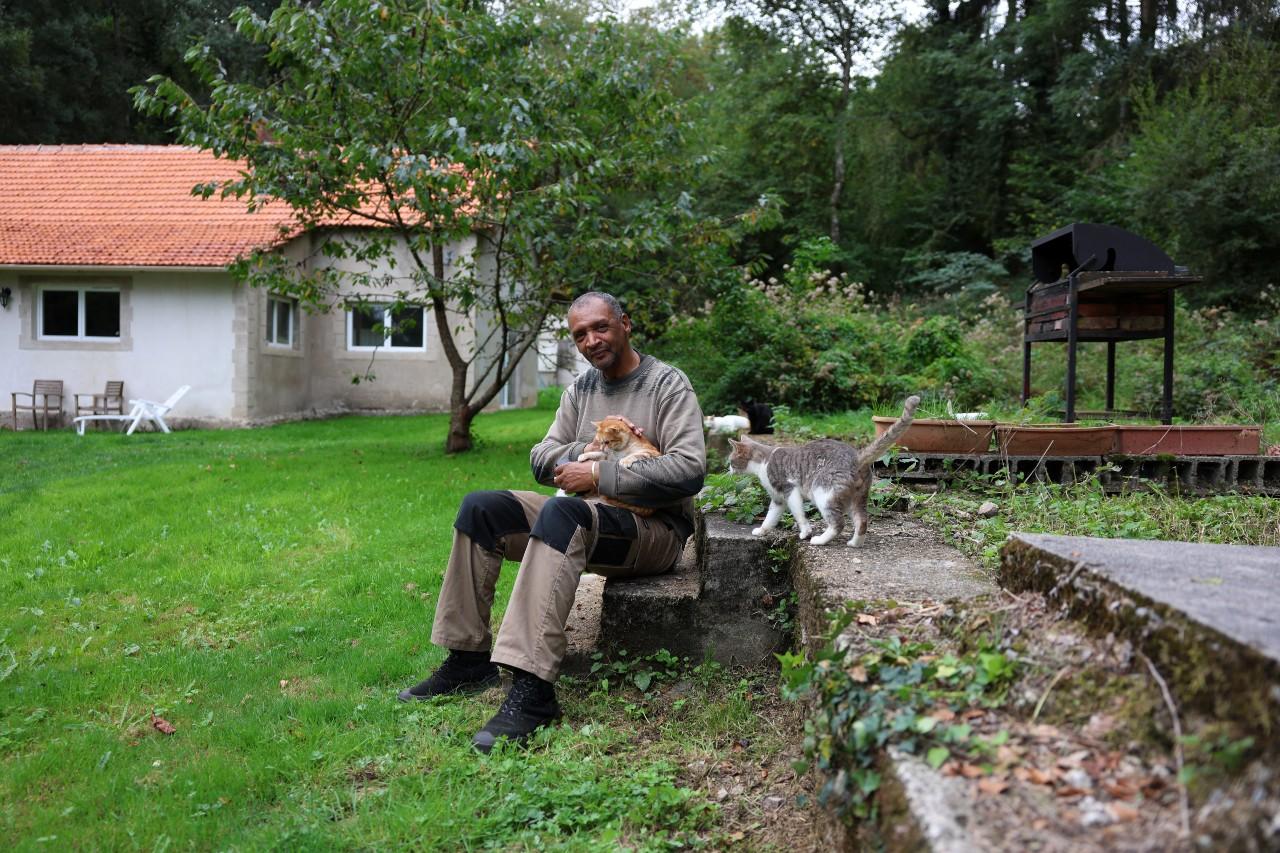
Roger Konaté's land is contaminated with heavy metals from a closed tungsten mine. Credit: Axelle de Russé for Investigate EuropeAxelle de Russé for Investigate Europe
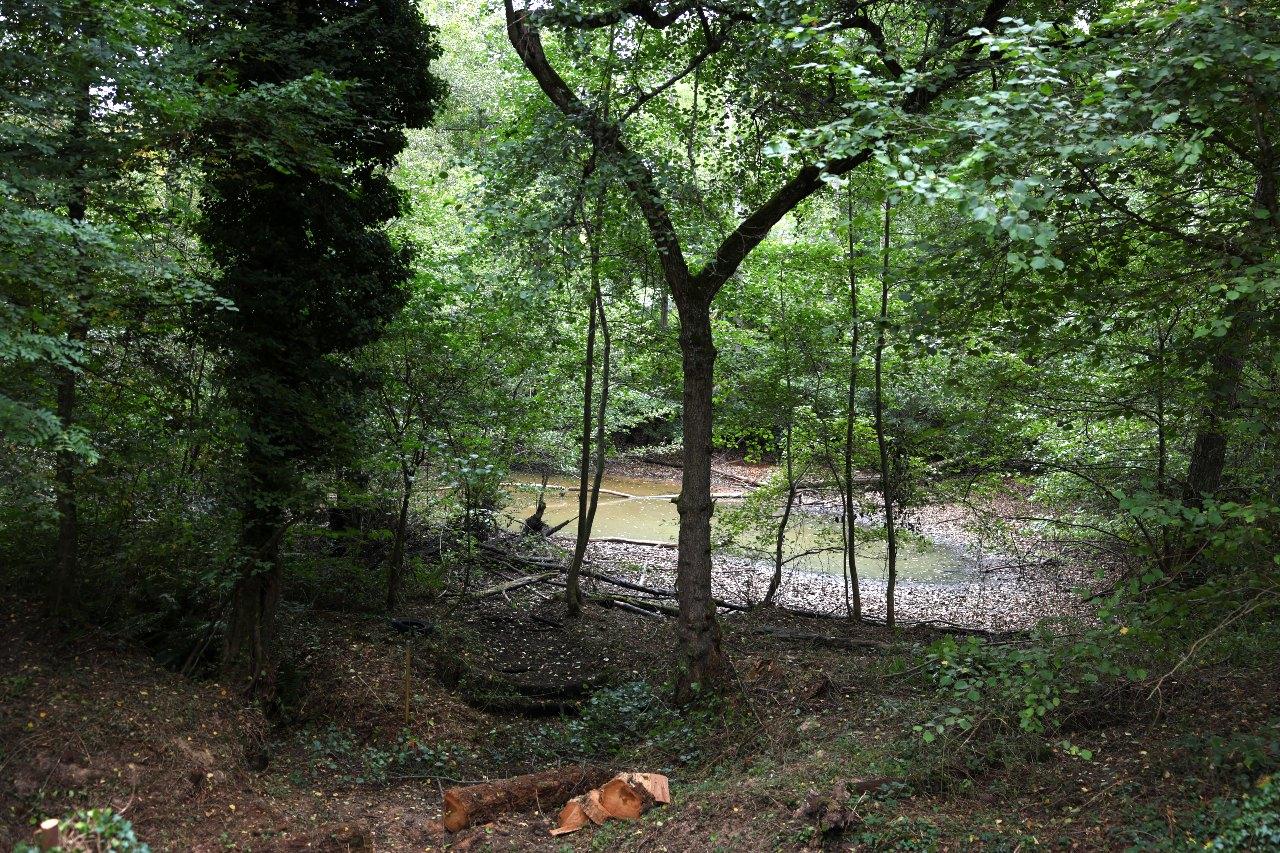
A stream near his home in Échassières, central France which provides water to his property.Axelle de Russé for Investigate Europe
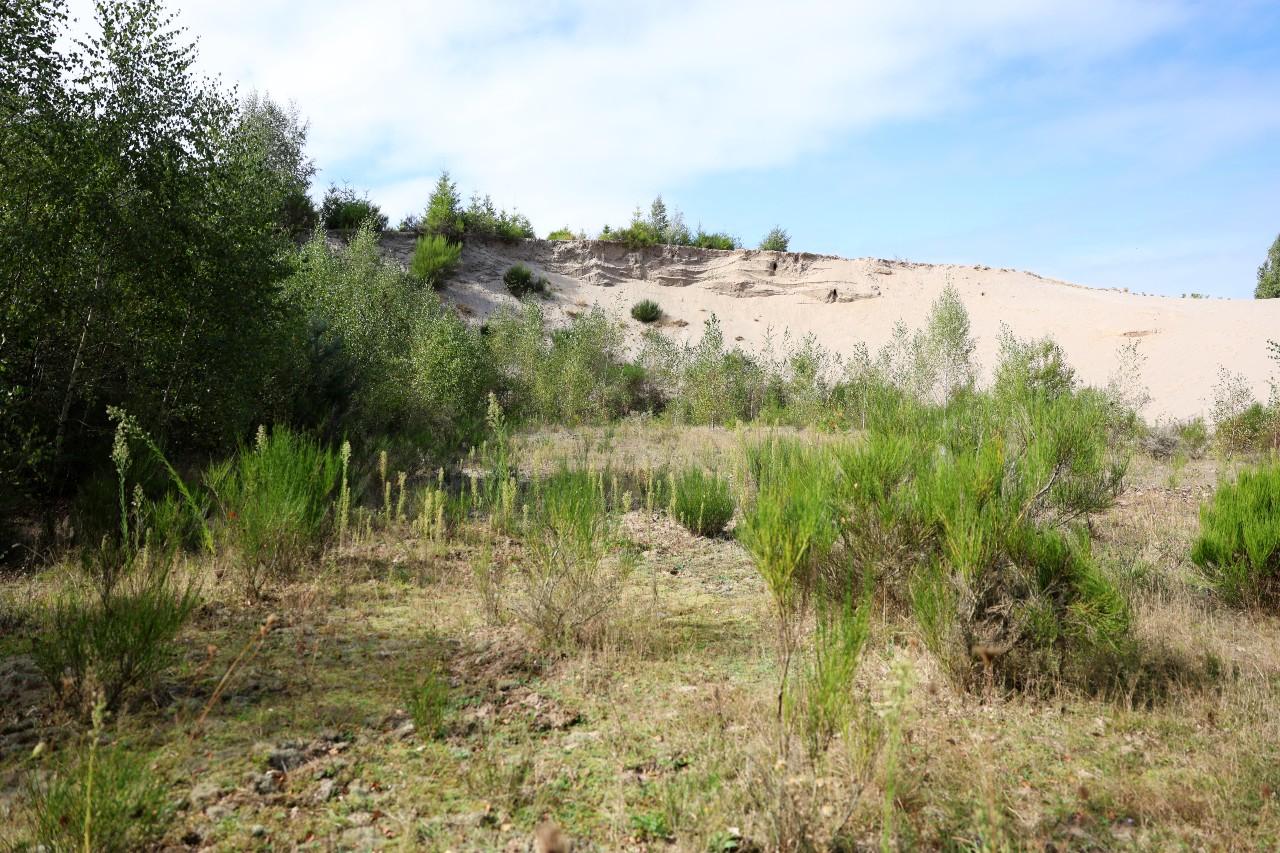
Toxic waste from the tungsten mine remains present in the surrounding area.Axelle de Russé for Investigate Europe
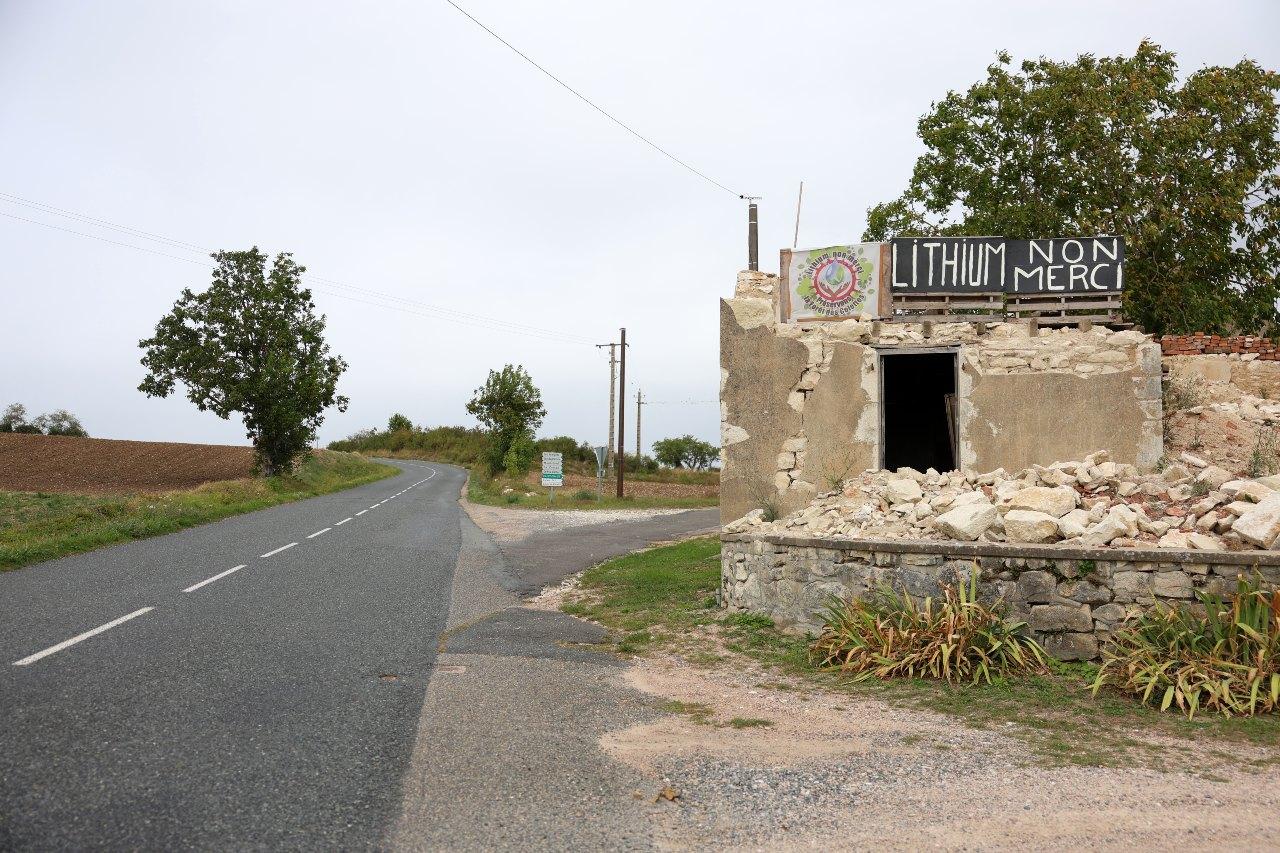
Locals are now protesting a new lithium mine development nearby.Axelle de Russé for Investigate Europe
Roger Konaté's case is not an isolated one. He is one of millions of Europeans living close to a polluted mining site, whether abandoned or still in operation. A study by UK researchers published in September found that 23 million people worldwide live on land contaminated by metal mining waste. Professor Mark Macklin from the University of Lincoln, who led the research, calculated for Investigate Europe the impact across the continent.
“We estimate that circa 1.73 million people in Europe are living on floodplains contaminated by historical and present-day metal mining," he says.
Investigate Europe analysis of little-known EU data has found that vast quantities of hazardous mining waste remains hidden beneath European soil. According to a European Commission report published in 2016, 48.7 million tonnes of toxic waste from mines were stored in the EU. Exclusive data provided to Investigate Europe by the bloc’s statistical office, Eurostat, meanwhile, shows that 20.8 million tonnes of toxic waste from operating mines was reported in 2020. Bulgaria was responsible for more than 13 million tonnes, followed by Sweden (4.7 million tonnes). Despite the findings, Investigate Europe analysis indicates that member states and mining companies are significantly under-reporting mining waste volumes.
“We estimate that circa 1.73 million people in Europe are living on floodplains contaminated by historical and present-day metal mining," he says.
Investigate Europe analysis of little-known EU data has found that vast quantities of hazardous mining waste remains hidden beneath European soil. According to a European Commission report published in 2016, 48.7 million tonnes of toxic waste from mines were stored in the EU. Exclusive data provided to Investigate Europe by the bloc’s statistical office, Eurostat, meanwhile, shows that 20.8 million tonnes of toxic waste from operating mines was reported in 2020. Bulgaria was responsible for more than 13 million tonnes, followed by Sweden (4.7 million tonnes). Despite the findings, Investigate Europe analysis indicates that member states and mining companies are significantly under-reporting mining waste volumes.
The hazardous residues of arsenic, lead, mercury, cadmium and other polluting metals harmful to health and the environment represent "a serious threat", according to the European Commission. At a time when Europe wants to open mines to hunt for rare earths and critical raw materials, the analysis shows how the EU is failing to deal with the huge amounts of mining waste that already exist.
“Officially, the European Commission is concerned about the situation, but in reality it is not really tackling the problem," says Diego Marin from the European Environmental Bureau. “The mining industry is keeping Europe under the illusion that all is well, that everything is transparent and that member states and industries are working hand in hand.. [in reality], it's doing everything it can to hide the problem.”
In 2006, the Extractive Waste Directive (EWD) was passed, focusing on "the management of waste from extractive industries", largely in response to high-profile mining disasters in Spain and Romania. The directive, which classifies toxic waste as ‘Category A’, obliges member states to keep inventories of hazardous installations, emergency plans and make information available to the public.
But little progress has been made. Only one report has so far been published, in 2016, despite the directive stating that findings should be released every three years. The Commission blamed member states when asked why no more reports exist. “The type of data provided by the states varies considerably, which makes it impossible to compare them,” a spokesperson told Investigate Europe.
“Officially, the European Commission is concerned about the situation, but in reality it is not really tackling the problem," says Diego Marin from the European Environmental Bureau. “The mining industry is keeping Europe under the illusion that all is well, that everything is transparent and that member states and industries are working hand in hand.. [in reality], it's doing everything it can to hide the problem.”
In 2006, the Extractive Waste Directive (EWD) was passed, focusing on "the management of waste from extractive industries", largely in response to high-profile mining disasters in Spain and Romania. The directive, which classifies toxic waste as ‘Category A’, obliges member states to keep inventories of hazardous installations, emergency plans and make information available to the public.
But little progress has been made. Only one report has so far been published, in 2016, despite the directive stating that findings should be released every three years. The Commission blamed member states when asked why no more reports exist. “The type of data provided by the states varies considerably, which makes it impossible to compare them,” a spokesperson told Investigate Europe.
“Circa 1.73 million people in Europe are living on floodplains contaminated by historical and present-day metal mining.”
— Professor Mark Macklin
The 2016 report, based on data from 2012, showed that almost 50 million tonnes of toxic waste from closed and active mines was present across Europe. However, the Commission, aided by external consultancy firms, raised concerns about the legitimacy of the figures provided. The report said some submissions seemed “implausible” and were “relatively low when compared with information from other sources on national extraction waste production.”
Denmark, Latvia, Lithuania, Luxembourg, Malta and the Netherlands claimed to have no facilities within the scope of the directive. "However,” the report wrote, “other sources of information indicate that extraction activities producing waste, including sometimes hazardous waste, do take place in some of these countries.”
The Commission’s report, which found that 25 per cent of ‘Category A’ facilities did not have emergency plans in place, also cross-checked information on mining accidents. Oddly, no government had reported any, despite being required to do so. "According to information obtained by the Commission, a total of five accidents occurred in two countries during the two reference periods covered by this report. However, none of these accidents were reported.”
Despite its stated desire for transparency, the Commission refused to tell Investigate Europe the names of the secretive states. Some accidents are not hard to find. For example, the one at the Ajkai Timfoldgyar site in Hungary on 4 October 2010. On that day, after the collapse of a dyke, 700,000 cubic metres of toxic red mud from bauxite processing spilled over seven villages, killing 10 people, hospitalising dozens and polluting the area. A Greenpeace analysis found land contaminated with arsenic, lead and mercury.
Denmark, Latvia, Lithuania, Luxembourg, Malta and the Netherlands claimed to have no facilities within the scope of the directive. "However,” the report wrote, “other sources of information indicate that extraction activities producing waste, including sometimes hazardous waste, do take place in some of these countries.”
The Commission’s report, which found that 25 per cent of ‘Category A’ facilities did not have emergency plans in place, also cross-checked information on mining accidents. Oddly, no government had reported any, despite being required to do so. "According to information obtained by the Commission, a total of five accidents occurred in two countries during the two reference periods covered by this report. However, none of these accidents were reported.”
Despite its stated desire for transparency, the Commission refused to tell Investigate Europe the names of the secretive states. Some accidents are not hard to find. For example, the one at the Ajkai Timfoldgyar site in Hungary on 4 October 2010. On that day, after the collapse of a dyke, 700,000 cubic metres of toxic red mud from bauxite processing spilled over seven villages, killing 10 people, hospitalising dozens and polluting the area. A Greenpeace analysis found land contaminated with arsenic, lead and mercury.
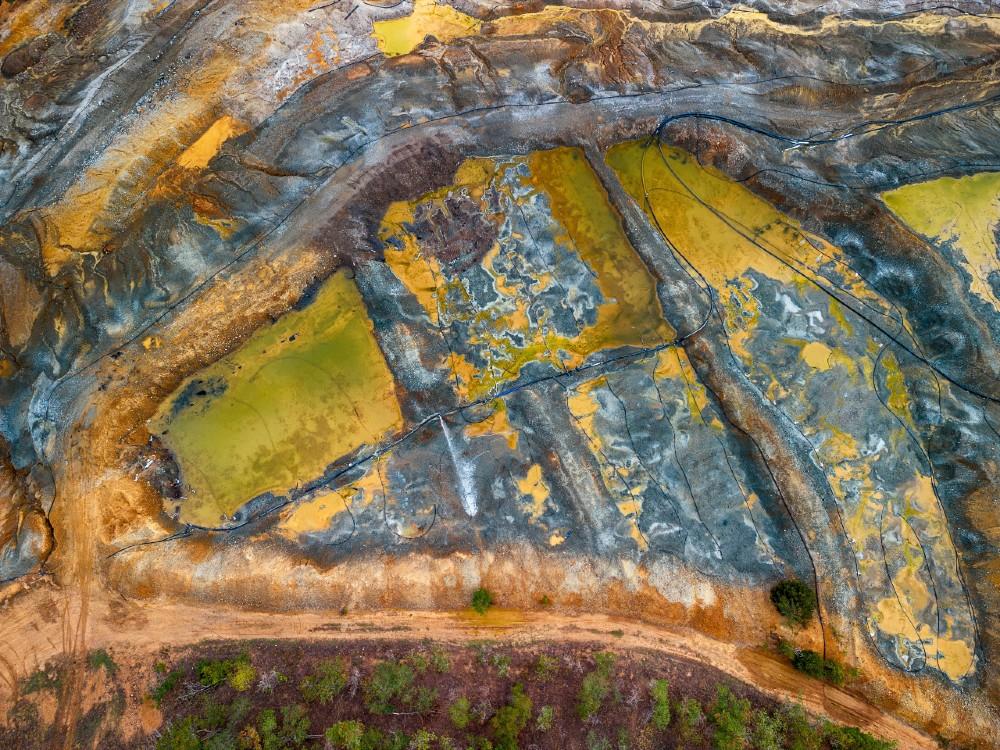
An abandoned mine in Bulgaria. More than 13 million tonnes of waste from its mining sites was reported in 2020.Shutterstock
In November 2012, a Finnish mine, Talvivaara, had a massive spill of toxic sludge containing aluminium, cadmium, nickel and uranium, into surrounding lakes and rivers. More recently, a Greenpeace analysis last year found that contaminated water spills from coal mines in Poland caused the death of 300 tonnes of fish.
The European Environmental Bureau’s Marin says the apparent violations of the directive are of little surprise. “You can have the best law in the world, but if nobody respects it, including the Commission, it's useless,” he says.
The Commission told Investigate Europe: “When breaches were identified, infringement procedures were initiated and closed as member states corrected the shortcomings identified. Today, there are no open infringement cases in relation to the EWD.”
Yet, the European Commission has had a hard time bringing member states to order, even when it comes to the basic obligation of compiling an inventory of their facilities containing ‘Category A’ toxic waste. "Some member states have not yet finished designating their Category A facilities," the 2016 report found.
Estonia, for example, claimed at the time to have no Category A installations. However it is home to the largest oil shale mining operation in the EU. Bulgaria, meanwhile, declared only three Category A facilities, when experts hired by the Commission had identified nine.
The European Environmental Bureau’s Marin says the apparent violations of the directive are of little surprise. “You can have the best law in the world, but if nobody respects it, including the Commission, it's useless,” he says.
The Commission told Investigate Europe: “When breaches were identified, infringement procedures were initiated and closed as member states corrected the shortcomings identified. Today, there are no open infringement cases in relation to the EWD.”
Yet, the European Commission has had a hard time bringing member states to order, even when it comes to the basic obligation of compiling an inventory of their facilities containing ‘Category A’ toxic waste. "Some member states have not yet finished designating their Category A facilities," the 2016 report found.
Estonia, for example, claimed at the time to have no Category A installations. However it is home to the largest oil shale mining operation in the EU. Bulgaria, meanwhile, declared only three Category A facilities, when experts hired by the Commission had identified nine.
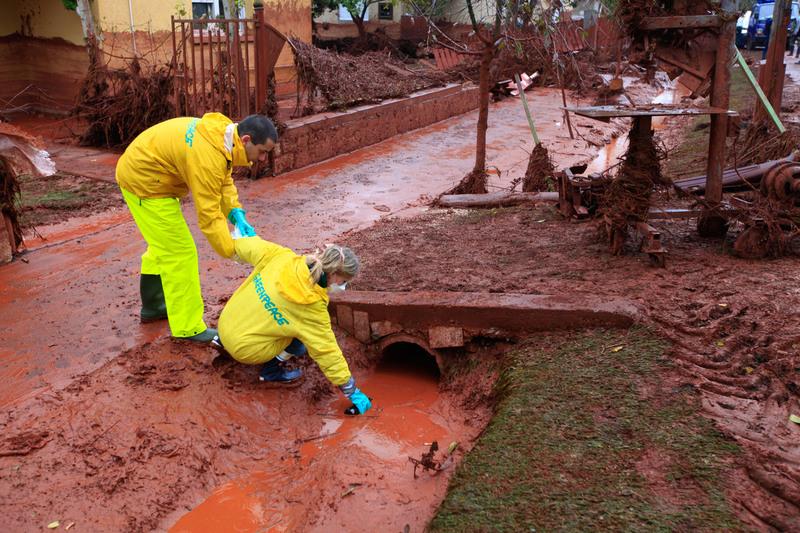
Greenpeace activists take samples from the toxic sludge flood in the village of Kolontar, Hungary. Credit: Waltraud Holzfeind / Greenpeace.
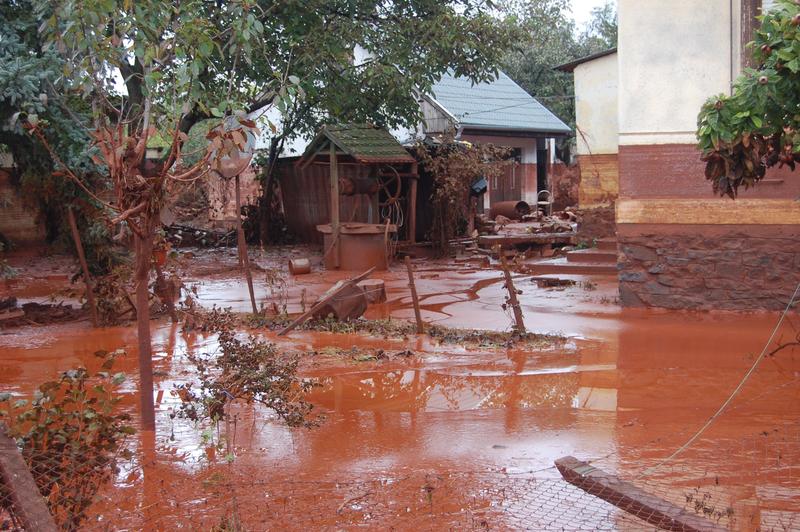
The spill from the Ajkai Timfoldgyar mine in 2010 flooded several villages in the surrounding area.
Authorities in Spain told Investigate Europe that they were still "in the process of updating its data". Norway has never declared any Category A facilities, even though its Titania titanium mine is one of Europe's largest. This was "due to an error", the government says.
Since 1993, toxic waste has been stored behind a dam at Titania, which if breached could cover the surrounding valley with silt "in 13 minutes", according to experts. In fact, the mining company discovered in 2021 that the waste contained water that could seep through and cause a rupture. Today, the dam has been reinforced. Before that was done, local residents expressed their deep worry: "I almost feel like I have moved to Pompeii", one of them told the newspaper VG.
The Norwegian government admitted that it also has 100 former closed mines on its territory, “presenting a potential for pollution, areas where the waste contains sulfides that could lead to heavy metal leaks”. None of these have yet been declared to the Commission.
Yet the Commission said there had been no problems in applying the directive: "The study supporting the development of general guidelines on the implementation of the Extractive Waste Directive (2021) has not detected any lack of implementation or enforcement of the reporting requirements set out in the Directive".
Since 1993, toxic waste has been stored behind a dam at Titania, which if breached could cover the surrounding valley with silt "in 13 minutes", according to experts. In fact, the mining company discovered in 2021 that the waste contained water that could seep through and cause a rupture. Today, the dam has been reinforced. Before that was done, local residents expressed their deep worry: "I almost feel like I have moved to Pompeii", one of them told the newspaper VG.
The Norwegian government admitted that it also has 100 former closed mines on its territory, “presenting a potential for pollution, areas where the waste contains sulfides that could lead to heavy metal leaks”. None of these have yet been declared to the Commission.
Yet the Commission said there had been no problems in applying the directive: "The study supporting the development of general guidelines on the implementation of the Extractive Waste Directive (2021) has not detected any lack of implementation or enforcement of the reporting requirements set out in the Directive".
“You can have the best law in the world, but if nobody respects it, including the Commission, it's useless.”
— Diego Marin, European Environmental Bureau
In the 2016 report, Greece declared it had 72 million tonnes of mining waste from open and closed mines. But none was classified as hazardous waste. However, a government-backed report published in 2009 and seen by Investigate Europe calls into question the figures. The report found several hundred million tonnes of waste remained across the country, including 69 million tonnes from a closed asbestos mine in Zidani, northern Greece.
“High asbestos content was found in every environmental sample” the report stated. Strikingly, the Zidani site was listed only 21st in the classification, meaning there were 20 former mining sites in a worse shape. The Greek state and the EU have since forked out around €60 million for rehabilitation of the Zidani site.
Costas Papazachos, a seismology professor at the University of Thessaloniki, believes the cost of dealing with waste is often disproportionate to the benefits of extractive industries and is overlooked by authorities.
The Kokkinolakas dam, for example, which holds back five million tonnes of waste from the nearby Kassandra mines, sits virtually at the top of a seismic fault that in 1932 produced one of the worst earthquakes in the country's history. "This is a world first. When I explain to my foreign colleagues that this is the site of the hazardous waste dam, they think they've missed something; they can't understand that this is happening in a European country," explains Papazachos.
Eldorado Gold, the mining company, says that the seismic risk is manageable. The company says it ensures that the waste remains dry, which reinforces safety and stability. But what happens when the gold runs out and the company leaves? “Who will manage these hazardous materials?” asks Papazachos. “The waste will be there forever, meaning it will certainly experience the worst case earthquake scenario and the dams will certainly fail.”
“High asbestos content was found in every environmental sample” the report stated. Strikingly, the Zidani site was listed only 21st in the classification, meaning there were 20 former mining sites in a worse shape. The Greek state and the EU have since forked out around €60 million for rehabilitation of the Zidani site.
Costas Papazachos, a seismology professor at the University of Thessaloniki, believes the cost of dealing with waste is often disproportionate to the benefits of extractive industries and is overlooked by authorities.
The Kokkinolakas dam, for example, which holds back five million tonnes of waste from the nearby Kassandra mines, sits virtually at the top of a seismic fault that in 1932 produced one of the worst earthquakes in the country's history. "This is a world first. When I explain to my foreign colleagues that this is the site of the hazardous waste dam, they think they've missed something; they can't understand that this is happening in a European country," explains Papazachos.
Eldorado Gold, the mining company, says that the seismic risk is manageable. The company says it ensures that the waste remains dry, which reinforces safety and stability. But what happens when the gold runs out and the company leaves? “Who will manage these hazardous materials?” asks Papazachos. “The waste will be there forever, meaning it will certainly experience the worst case earthquake scenario and the dams will certainly fail.”
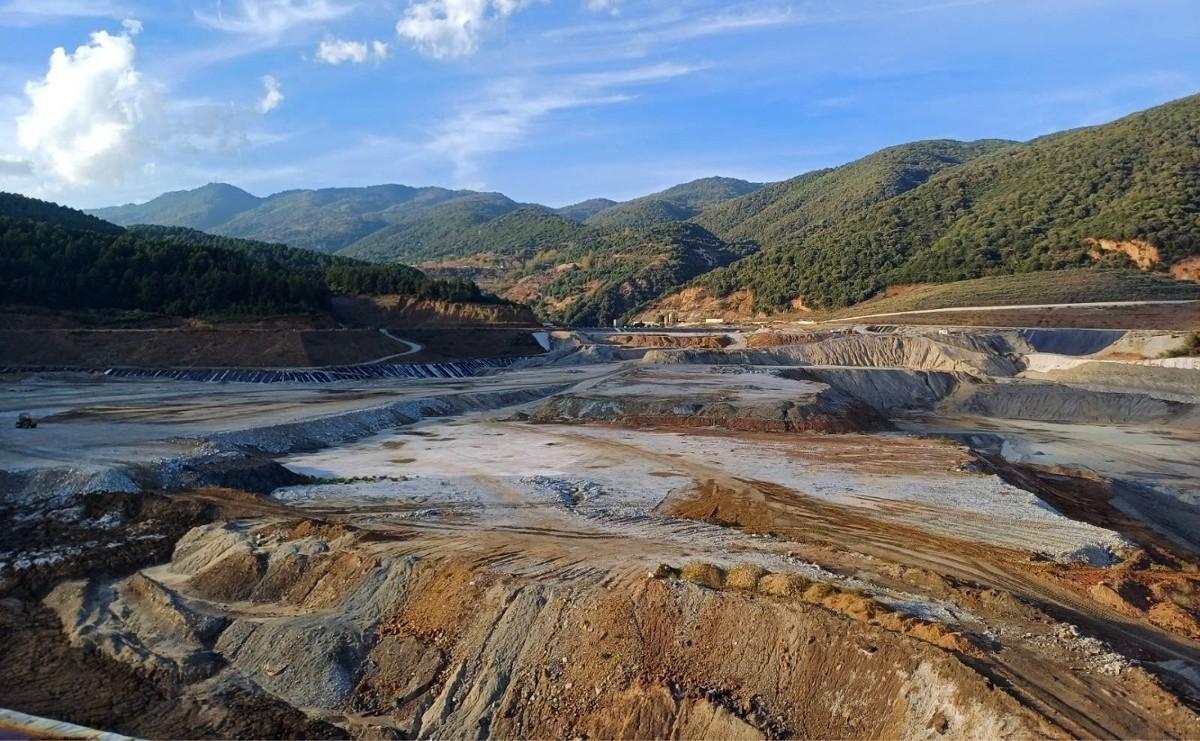
A waste facility at the Kassandra mines, which export lead, zinc and gold internationally.Eurydice Bersi
The risks posed by mining waste across Europe remains a contentious issue. Debates could become more fierce in the years ahead, now that the EU wants to open mines in the search for critical raw materials like lithium and rare earths.
"The issue of mining pollution has long been a non-issue in France and Europe, not just because the highest levels of government are unaware of it or uninterested, but above all because the cost of cleaning up contaminated land would be far too high," says Laura Verdier, an engineer in mining pollution and author of a book on the subject.
In France alone, the cost of creating an nationwide inventory of polluted soils - from industrial and mining activities - is estimated at €2 billion, according to Verdier. Across Europe, the cost of removing toxic waste would be tens of billions of euros. And governments and mining companies are not prepared to pay, even though the techniques, particularly those developed in Belgium and Holland, do exist.
Diego Marin of the European Environmental Bureau says the failure to implement the directive has also been because “nobody wants to admit that we couldn’t recycle all the mining waste” that remains hidden across Europe. The EU, however, told Investigate Europe that it intends to take action. “The Commission recently explicitly encouraged member states to provide additional information for improvement in the next report, scheduled for January 31, 2024," a spokesperson said.
Editor: Chris Matthews
Graphics: Marta Portocarrero
Additional reporting: Manuel Rico
"The issue of mining pollution has long been a non-issue in France and Europe, not just because the highest levels of government are unaware of it or uninterested, but above all because the cost of cleaning up contaminated land would be far too high," says Laura Verdier, an engineer in mining pollution and author of a book on the subject.
In France alone, the cost of creating an nationwide inventory of polluted soils - from industrial and mining activities - is estimated at €2 billion, according to Verdier. Across Europe, the cost of removing toxic waste would be tens of billions of euros. And governments and mining companies are not prepared to pay, even though the techniques, particularly those developed in Belgium and Holland, do exist.
Diego Marin of the European Environmental Bureau says the failure to implement the directive has also been because “nobody wants to admit that we couldn’t recycle all the mining waste” that remains hidden across Europe. The EU, however, told Investigate Europe that it intends to take action. “The Commission recently explicitly encouraged member states to provide additional information for improvement in the next report, scheduled for January 31, 2024," a spokesperson said.
Editor: Chris Matthews
Graphics: Marta Portocarrero
Additional reporting: Manuel Rico




